I was woozily sitting on the perimeter of the general store amid the peak of Bhagoria Fest, with a DSLR in my hand, waiting to come across an appealing face that I could capture among the brightly-dressed swarm of people. It made me feel like I was an audience watching the chaotic celebration unfold in front of me and had a silent role in its theatrics. Are you wondering about the woozy part? Yeah, Taadi might’ve had something to do with it.
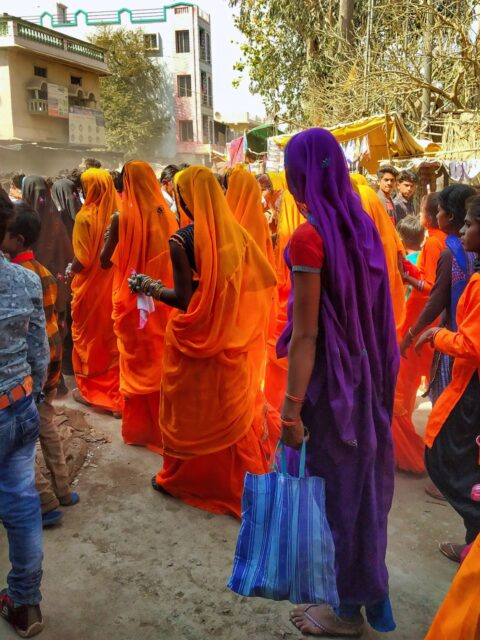
I have heard several fascinating stories of the Bhil tribe in MP for a long time from my relatives. Their culture has always intrigued me. My mama (mother’s cousin), who has been long associated with the tribal areas through the education sector, always pinpoints, “Ye shuru se asli foreigners hain India ke!” (They are the true modern Indians since the beginning”) I always thought, how is this possible? My mother also had spent some time with them, attending festivals as a kid. She had even witnessed a wedding where an old couple was finally getting married after living together, and their adult children were present in the celebration. This part made me think about how several tribes across the country have been functioning independently and sustainably, and are often quite ahead of time, disregarding the obligations of modernity.
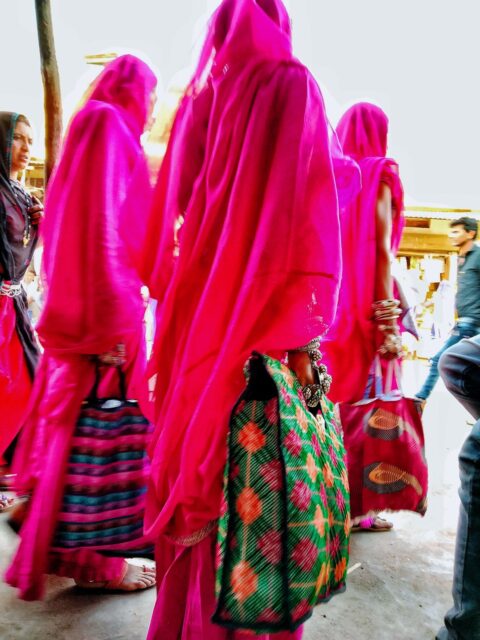
I was pretty eager to see all of it for myself. Finally, the year was 2019, an optimistic time before COVID, when my mom and I decided to finally visit the Alirajpur district for the Bhagoria fest- one of the main festivals for the Tribals of the Malwa region. It is an opportunity for young boys and girls to choose and declare their life partners in front of their community. I observed some boys putting gulaal on the girls’ cheek. The delightful locals who came to the shop to buy some tidbits told me that if the girl is willing, she also puts back the bright red gulaal on the boy’s cheek. If their families accept them, they can lead their lives as husband and wife. If there are some conflicts and the bows and arrows get out, they can elope and start their lives anew without even getting married. “Bhag” means run, hence the name Bhagoria.
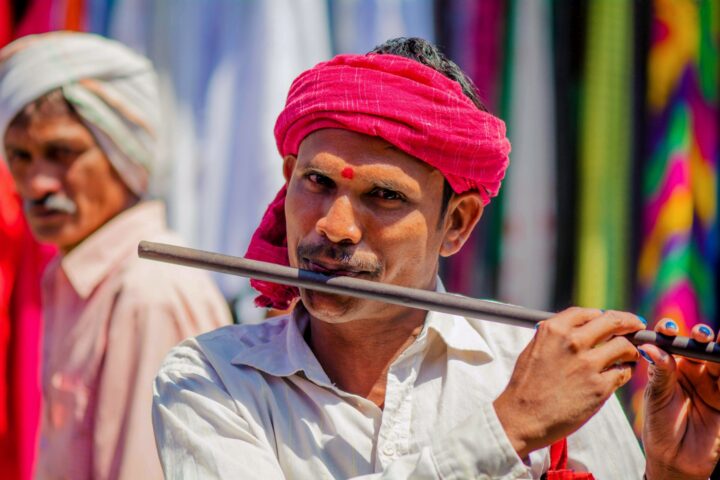
They celebrate the fest for a whole week before Holi by dancing, singing folk songs, playing handmade flutes, and dressing up in colourful clothes. It amalgamates tribal communities from the three connecting states- Madhya Pradesh, Gujarat, and Maharashtra. I noticed during the fest that their Adivasi (tribal) dialect is a mix of all three languages- Bundelkhandi, Gujarati, and Marathi. I could identify which state they came from, from their clothing, their prints and designs, and the jewellery they were wearing. Their colour-coded clothes are a way to represent which village they come from.
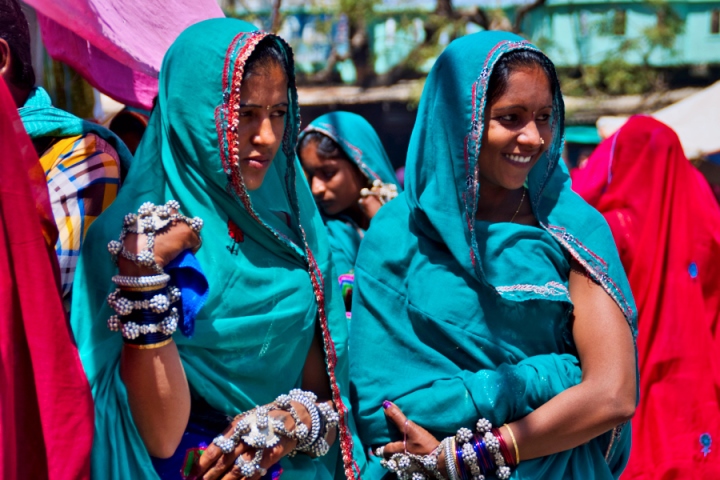
We speculated the night before the fest that just roaming around the fair and coming back in 1-2 hours wasn’t enough. It would be best to have a temporary arrangement within the fest till evening. Not that the celebrations end by that time, but it is truly not safe for anyone after sunset. Usually, the tribals get drunk on taadi and bring out their bows and arrows if a conflict arises. Let’s just say, things can get temperamental here at times, but the locals are always gracious towards visitors. I say this from my experience, they always go the extra mile to fraternise with an acquaintance. And yes, taadi for all the occasions is as vital as it gets for the tribal community- whether it is creating a ruckus, resolving a dispute, or celebrating.
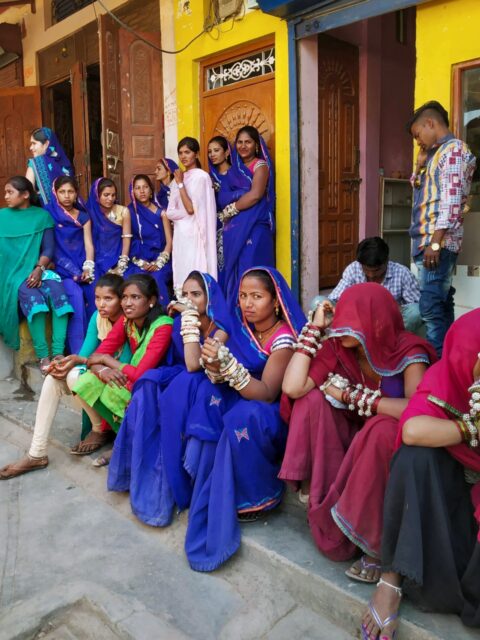
A solution was quickly derived to stick around for the day at the general store that my uncle’s neighbour, Rahul Bhaiya, owned. I imagined that my uncle’s place was the base camp where we were staying for two days, and the general stores that we were about to visit, were the different stopovers for our trail.
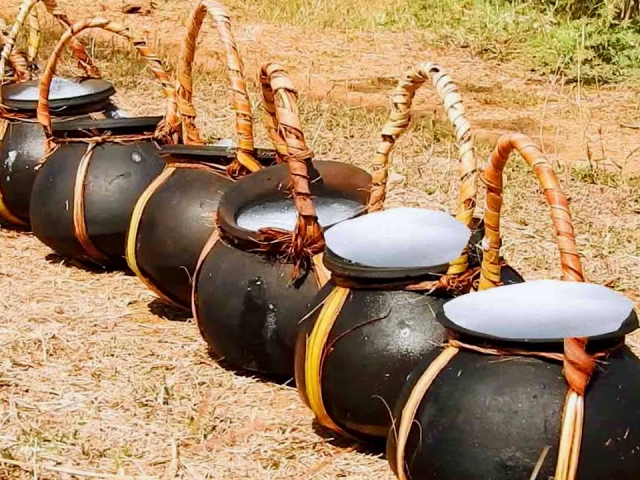
While we were on our way to the fest, we came across a few taadi sellers on the roadside. I got pretty excited to try out the delectable drink everyone was carrying in their clay pots. Rahul bhaiya casually warned us here, “Bhot log kuch-kuch milake taadi ke naam se bechte hain. Ye to nakli maal hai” (A lot of people adulterate it and sell it as taadi. This is not pure stuff). Although, he assured us that he would happily take up the responsibility of making us taste the pure taadi.
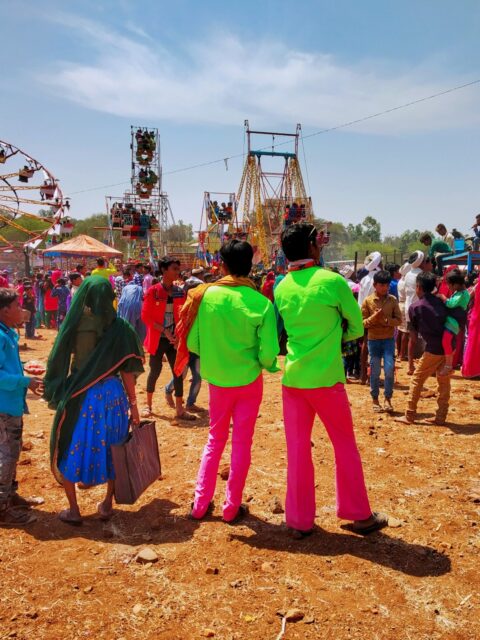
Soon, we reached the general store in the primary market, right before the frenzy fanned out before us. The market here is called a haat, usually organised weekly in all the neighbouring villages. The tribals come and buy groceries and general goods for themselves. Since Bhagoria is a celebratory occasion, the haat gets grander with additions like a fair, dance processions on the road, and small stalls dotted across the villages and districts.
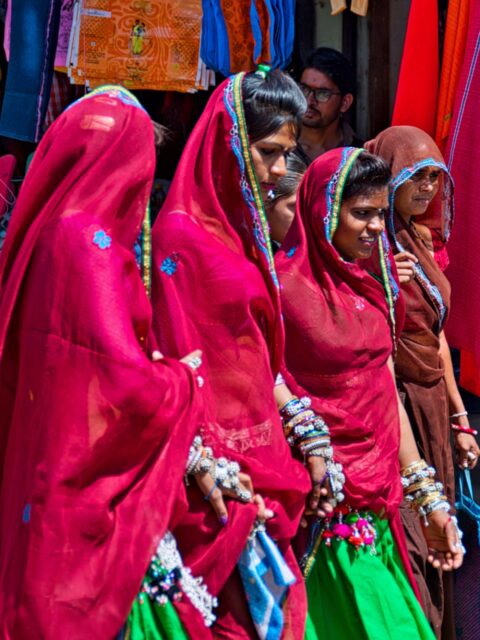
I roamed around the market, browsing through myriads of shops and stalls selling traditional clothes, beautiful handmade decorative goods, grocery items, fresh vegetables, and, most importantly, silver. I learned that the Bhils heavily invest in silver jewellery. Every woman in the fest- be it a teenager or a 90-year-old grandma- was adorned from head to toe with necklaces made of silver coins, earrings, ear cuffs, thick bangles, toe-rings, anklets, hathphool, and many more unique ornaments.
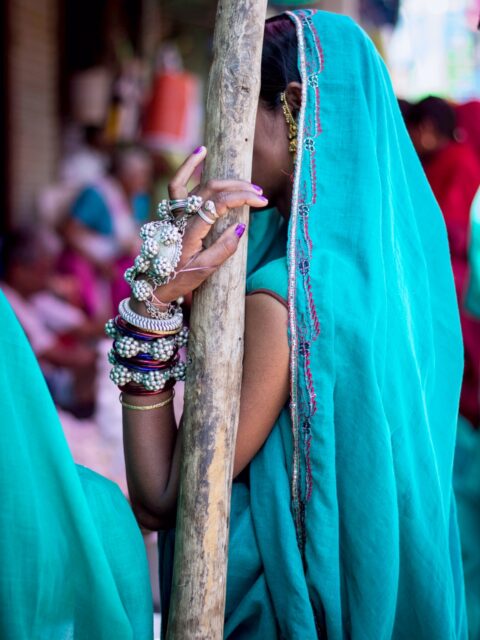
By the time I came back to the shop, three large plastic bottles of Bisleri were kept on a stool that carried a frothy, translucent white liquid in them. My first thought was we were going to have buttermilk along with our lunch. But Rahul Bhaiya told us it was Taadi fresh out of the palm tree saps.
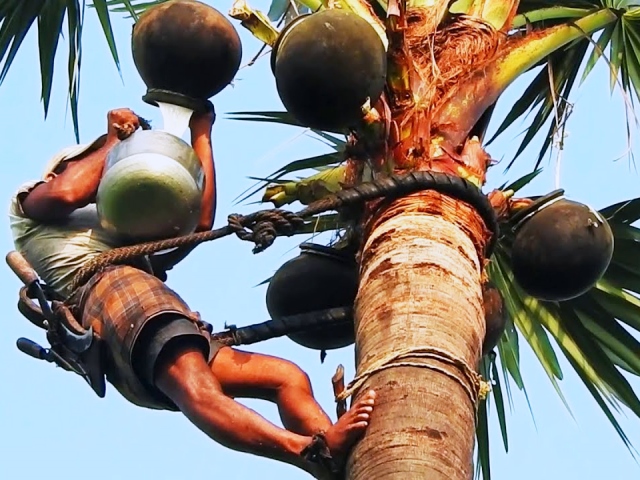
So, he excitedly opened up a bottle and served it to us in disposable glasses. The next thing I know, all of us are gulping down 2-3 glasses each! It tasted as if coconut water and buttermilk had been mixed and given to us to drink- sweet and sour, light on the stomach, yet filling. This drink is like the energy-laden Redbull minus the caffeine.
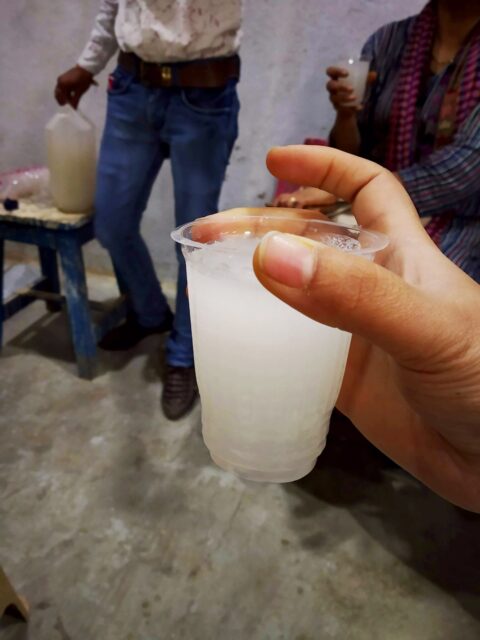
After drifting along with the colourful waves of tribal folks crashing under the scorching sun, taadi was the perfect drink to have. Along with it, a simple lunch of aloo ki rassedar sabzi (potato curry), parathe (flatbread), and Ghar wala aam ka achaar (homemade mango pickle) were savoured.
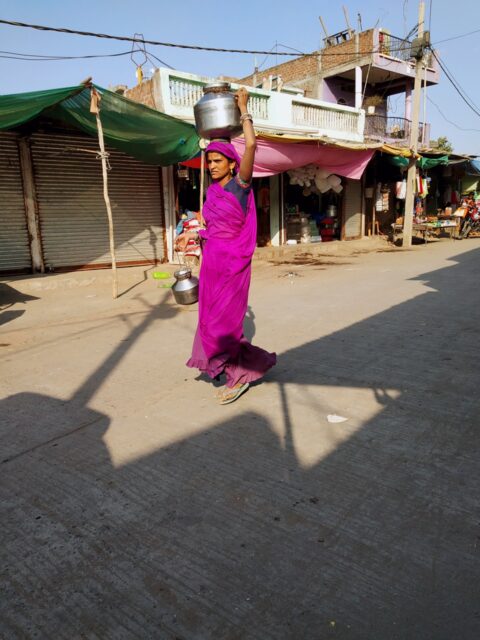
We were told that as soon as the sun rays hit the taadi, it begins to ferment and eventually turn into alcohol. Well, I soon realised that we drank taadi early in the afternoon when the sun was still not at its peak. The taadi had gradually lulled me into a day dreamy state by this time. It wasn’t too much, but I enjoyed it by doing what I liked most that day- sitting outside the general store, people watching to my heart’s content, with the DSLR in my hand, looking out for a muse to capture.
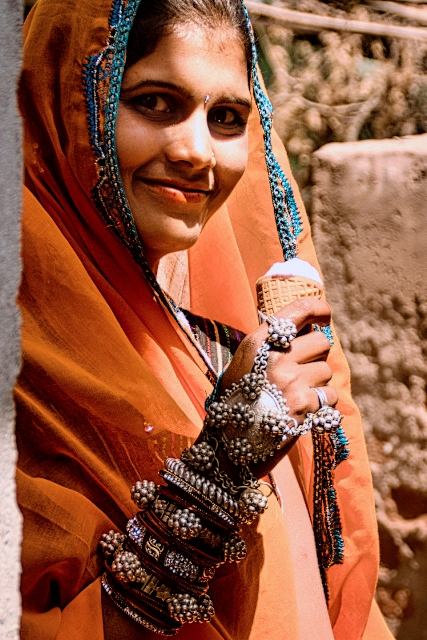
Vallari is an independent writer and editor, with focus on food, travel, and lifestyle. Born and brought up in Madhya Pradesh, she has always been keen to explore its culture. She is an IHM Mumbai graduate in hospitality and is a fanatic of new experiences, cuisines, and the tales behind them. You can follow her on @vallahabibi
Translations and detailed descriptions are provided to give a better understanding of the story to people from different cultural backgrounds across the globe.

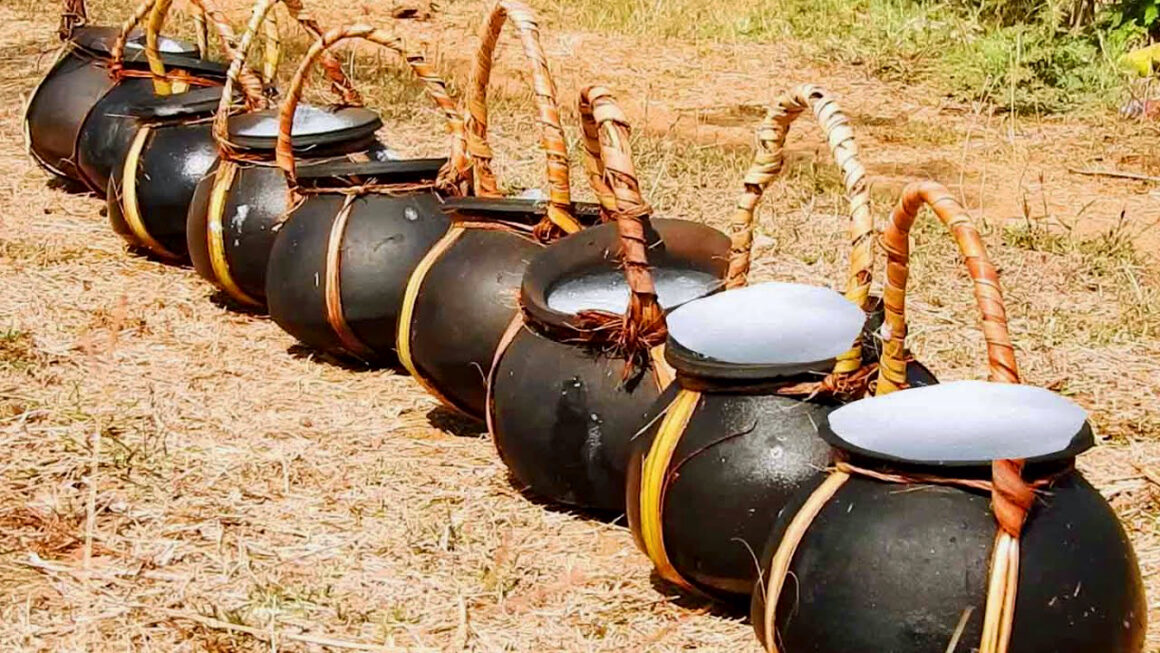
1 comment
Superbly written…. Amazing!!